Wednesday, 7 January 2015
The Apple iPhone 6 and Galaxy Note 4 are two of the hottest smartphones available, but they each have their own individual strengths and weaknesses. Here are six ways the iPhone 6 outperforms the Galaxy Note 4.
I'm a two-smartphone kind of guy. My current smartphones of choice: The Apple iPhone 6 and Samsung Galaxy Note 4.
Both the iPhone 6 and Note 4 are high-end, cutting-edge devices packed with valuable and unique features. They're two of the best smartphones available today, which is why they've found homes in my pockets.
Neither device is perfect, though. When you use them alongside each other, their individual strengths and weaknesses quickly become apparent.
The following list details six things the iPhone 6/iPhone 6 Plus does that the Samsung Galaxy Note 4 can't — or at least can't do as well.
(Note: The iPhone 6 and iPhone 6 Plus are nearly identical, with three exceptions. The iPhone 6 Plus is notably bigger, the iPhone 6 screen resolution is lower than the 6 Plus screen, and the iPhone 6 Plus has an optical image stabilization, or OIS, camera feature that the iPhone 6 lacks. Unless otherwise stated, the conclusions I make about iPhone 6 can also be applied to the iPhone 6 Plus.)
1) iPhone 6 and the Apple Ecosystem
Apple products are specifically designed to work together. With each new iPhone/iPad/Mac/whatever iteration, the integration grows stronger and more complex.Apple builds its own computers and desktop software, and its mobile devices are specifically designed to integrate with those devices on an OS level. Samsung makes phones and PCs, but it doesn't develop the Android, Windows or Chrome software that powers them. As such, Samsung's Android integration with Windows PCs and Chromebooks doesn't offer the same experience as Apple's ecosystem.
Galaxy Note 4 users can download a variety of different apps to do many of these same things on their Macs or PCs. For example, multiple apps available on Google Play let you control Apple TV or Google's rival offerings, Chromecast and Nexus Player. It's easy to find apps that let you mirror your Android screen on your TV. In general, though, the experience is far more scattered and disjoined than the Apple experience, because you have to use different apps with various interfaces.
If you're not a Mac user, and you're not invested in the Apple ecosystem, you may not care much about all of this integration. Apple products aren't for everyone, and I'm not trying to imply that Apple's ecosystem is superior to other options. The reality, however, is that this integration is one of Apple's unique value propositions. If you're an Apple customer, you'll likely get unique value from the iPhone 6 that you won't from any other smartphone.
2) iPhone 6, Touch ID and You
Both the iPhone 6 and Galaxy Note 4 have fingerprint readers built into their home buttons for authentication. On first glance, the two scanners look similar, though Apple's is round and Samsung's is an oval. They both sit at the base of their gadgets' displays.The similarities end there.
Apple's Touch ID finger scanner is easier to use and works much better than Samsung's rival offering. For example, you can use Apple's Touch ID in any orientation; it works whether you touch it with an upright finger, a sideways digit or an upside-down thumb. Samsung's Finger Scanner requires you to slowly swipe your finger from top to bottom or from bottom to top. It's finicky. I usually have to swipe my finger multiple times to unlock my Note 4. Touch ID on the iPhone is much more reliable; I rarely have to touch it more than once to unlock my phone.
Apple's mobile payment system, Apple Pay, has received a lot of attention since its launch last month, but the idea isn't a new one, and the Galaxy Note 4 can also use a set of mobile apps to make NFC payments, including Google Wallet and PayPal. Like Apple Pay and Touch ID, you can use the Note 4's fingerprint scanner to authorize mobile payments when you use PayPal. However, the Note 4 finger scanner often takes multiple swipes to work. That kind of ruins the experience, especially if there's a long line of shoppers waiting as you repeatedly swipe your finger. Apple Pay is more seamless, due in large part to the effectiveness of Touch ID.
It's not accurate to say that the iPhone 6 lets you do away with passwords for authentication and the Galaxy Note 4 doesn't. The Touch ID experience is head and shoulders above the Galaxy Note 4 finger scanner, though, and it's one of iPhone 6's standout features, which makes the Galaxy Note's scanner seem that much more disappointing. The Note 4's scanner is so unreliable that I've mostly stopped using it. Touch ID, on the other hand, is probably my single favorite iPhone 6 feature. I use it constantly.
3) Apple iPhone 6 Size and Your Pocket
I seem to be in the minority these days, but I just can't get used to "phablets." In my opinion, the iPhone 6 is the perfect size for a phone. While the iPhone 6 Plus is apparently the more popular option, I appreciate the fact that Apple offers a smaller option for people who aren't ready to embrace the phablet movement.Of course, Samsung offers a plethora of different devices, in different shapes and sizes. In fact, Samsung offers far more options than Apple when it comes to smartphones. But if you want the best of what the Note 4 has to offer — the S Pen, the unparalleled multitasking features — it's phablet or nothing.
The iPhone 6 packs just about all of the same features as its big brother, with the exception of an OIS camera feature in the Plus, so you really don't sacrifice features if you opt for the smaller version. My number one complaint about the Note 4 is its size, and I'd more than welcome a "mini" Note 4.
The iPhone 6 comfortably fits in my pants pocket. The Note 4? Not so much.
4) Wider Array of Built-In Storage Options
If you want to buy the Galaxy Note 4 from a U.S. wireless carrier, it's only available with 32GB of fixed storage. Of course, the Note has a microSD memory card slot that supports cards up to 128GB, according to Samsung. The iPhone offers more fixed storage options. Both the iPhone 6 and iPhone 6 Plus are available with 16GB, 64GB and 128GB of fixed storage.5) iPhone 6 Cost of Entry
You can get an iPhone 6 for $100 less than a Galaxy Note 4. Specifically, the iPhone 6 with 16GB of storage costs $200 with a new wireless service agreement, while the 32GB Galaxy Note 4 costs $300 with a new contract.Comparing the iPhone 6 to the Galaxy Note 4 is kind of like comparing peaches to plums, though. It's more fitting to compare the iPhone 6 Plus 16GB, which costs $300 with a contract, and the 32GB Galaxy Note 4, which comes with more storage for the same price.
The unlocked 32GB version of the Galaxy Note 4 costs $840 in Samsung's online "factory outlet store." A contract-free 16GB iPhone 6 costs $650 via Apple's online store, while the 16GB iPhone 6 Plus goes for $750. (The contract-free iPhones in Apple's store are meant to be used on T-Mobile's network and may not be compatible with your wireless carrier.)
Bottom line: If you don’t want to spend more than $200 on a new phone, the iPhone 6 is an option. The Note 4 is not.
6) Apple iPhone 6 is Golden
OK, so this last point is a bit of stretch, and I probably could have skipped it. Gold phones are all the rage these days, and though Samsung advertises a gold Note 4 — and a pink one — the only colors available via U.S. carriers are black and white.I'm perfectly fine with that. I like my black (err, "space gray") iPhone and my (frost) white Note 4. I also know that the average consumer cares more about the color of their phone than I will ever understand. Boring ol' black and white options often don't cut it.
If you absolutely need a gold phone, or just really want one, and don't want to $900 on an unlocked Note 4 via Samsung, you'll find a (gaudy) friend in the iPhone 6 or iPhone 6 Plus.
On the Flip Side…
As stated at the start of this post, I really like both the iPhone 6 and the Galaxy Note 4, and it wouldn't be fair to only spotlight the good stuff about the iPhone 6. So, on the flip side, here are "6 Things Note 4 Does That iPhone 6 Can't."
"Dont forget to subscribe,join my site for new Games and softwares Updates,and to leave comments!"
Wednesday, 7 January 2015 by xvbzvz · 1
Sunday, 3 November 2013
We all have to know if Apple releasesiOS 6.1.3 to fix some
Bugs and need to know if iOS 6.1.3 so that it can no longer
in use Eavsi0njailbreak, for those of you who have iDevce A4 as the iPhone 3GS, 4 and iPod Touch are alreadyUpgrades to iOS 6.1.3,
you may be a little more luck because you can still do Dowgrade to iOS5.1.1 or Tethered jailbreak using Sn0wbreeze.
Why should downgrade to iOS 5.1.1. Why not toiOS 6.1.2 or lower? This caused the iOS 6.1.2 shsh files or lower have experienced Corrupt, so it can not use to downgrade to iOS 6.1.2. So maybe this is the only way is to downgrade to iOS5.1.1 using SHSH files that exist in the Cydia server
But the condition that can downgrade to iOS 5.1.1 on i
Phone 3GS / 4 and iPod Touch you. Still requires iOS 5.1.1 shsh.
If you do not have the SHSH files, There is no way to be able to Downgrade
iOS 6.1.3 to iOS 5.1.1.
For those of you who have iDevice with the A5 processor
or higher, such as the iPhone 4s / 5 or iPad 2/3/4/Mini
and already did upgrade to iOS 6.1.3, this method can
not be used to performDowgrade to iOS 6.1.3 iOS 5.1.1,
because iFaith not support the iDevice with the A5 processor
or higher, even if you have iOS 5.1.1 shsh files. My advice still enjoy
the current iOS, until hackers release new jailbreak tool.
if you want to downgrade iOS on iPhone or iPod, you should prepare the required
1. iFaith latest version, you can Download here
2. iREBrc7 you can Download here
3. IOS 5.1.1 SHSH Blobs file. you can requests from Cydia server,
use TinyUmbrella or iFaith.4. iTunes Latest version
5. iOS 5.1.1 is compatible with your iPhone or iPod.
How to Downgrade iOS 6.1.3 to iOS 5.1.1 Using iFaith
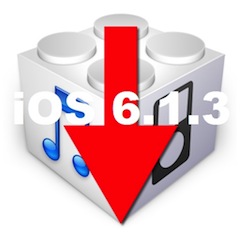
Step 1: Open iFaith By Way, Right Click and select "Run As Administrator"
Step 2: On the screen iFaith, Select "Build * signed * IPSW w / Blobs"
Then select "Browse for SHSH Blobs" Search iOS 5.1.1 SHSH file and click Open.
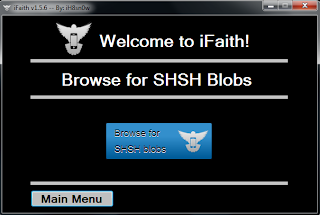
Step 3: Next, select "Browse for an IPSW" and Find Files
Firmware iOS 5.1.1 that you download or prepared beforehand.
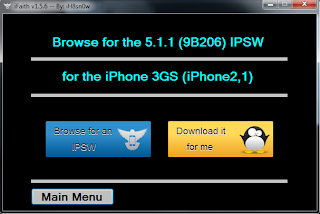
Step 4: Wait Until iFaith finished making a CTF file, so you just be patient enough, might use thetime to 5-10 minutes.
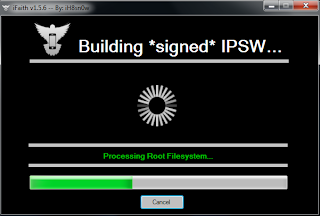
Step 5: After iFaith finished making CTF file for your iPhone or iPod,
please check the file,usually stored on your computer desktop.
Step 6: Next, iFaith will automatically guide you to position your iPhone or iPod into DFUMode. But at this moment, we do not Using iFaith to position your iPhone or iPod into DFUMode. So, Close iFaith
Step 7: Open iREB r7 that you downloaded earlier, By Way Right Click and select "Run AsAdministrator"
Step 8: Once your iPhone or iPod is detected in iREB r7, On the iDevice menu options, PleaseChoose according to your iDevice have.
Step 9: At this Moment, you will be guided by iREB r7 to position your iPhone or iPod Touchinto DFU Mode. Please Follow the instructions that show on the screen of iREB r7
- Press and Hold the Power / Sleep for 3 Seconds
- Press the Home button without releasing the power button / Sleep for 10seconds
- Without releasing the Power button Release the Home button (Home buttonremains in the press) for 15 Seconds
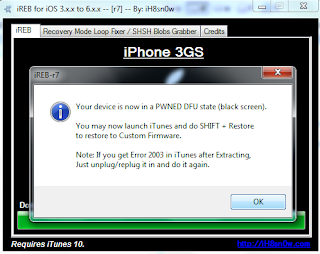
Step 10: After successfully position your iPhone or iPod Touch into DFU Mode, Close iREB r7,And Open iTunes, Now In iTunes your iPhone or iPod Touch will be detected as RecoveryMode.
Step 11: In iTunes Press and Hold down the Shift
key on your computer and then click"Restore" in iTunes. Then Select the File CTF was created using iFaith, this file is usually locatedin your Desktop Computer.
Step 12: Please Wait Until Done Restore Process. and enjoy iOS 5.1.1
"Dont forget to subscribe,join my site for new Games and softwares Updates,and to leave comments!"
Sunday, 3 November 2013 by xvbzvz · 0
Thursday, 4 July 2013
Dead Island Riptide pc
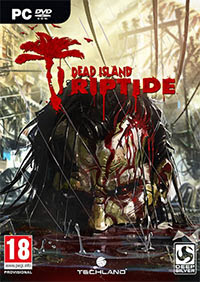
Game info:Game genre: action
Developer: Techland
Publisher: Deep Silver / Koch Media
Game Release Date
23 April 2013 Worldwide
26 April 2013 Europe
23 April 2013 USA
23 April 2013 Worldwide
26 April 2013 Europe
23 April 2013 USA
game mode single / multiplayer
multiplayer: InternetDead Island Riptide pc 2013 System Requirements:
QCore 2 Duo 2.66 GHz, 4 GB RAM, graphic card 512 MB (GeForce 9600 GT or better), 7 GB HDD, Windows XP/Vista/7
Dead Island Riptide pc 2013 Game Review:A gory carnival of zombie dismemberment, let down by narrative and technical THE ORIGINAL DEAD ISLAND was a game that bristled with potential. It offered gamers a mix of first-person survival horror gameplay, spliced with cooperative open world RPG elements similar to those seen on THQ's stellarBorderlands game series.
However, the game's potential to shine was let down by slightly repetitive combat mechanics, an inconsistent and not very original story and a number of graphical issues that consistently broke the game's otherwise immersive tropical island setting.
Despite these problems there was still plenty to like about the first Dead Island, which is why in its sequel Dead Island: Riptide we hoped to see a refined version of the original game that made good on the series' inherent promise. Sadly though, our optimism is yet to be rewarded and we have been treated to a title that only makes at best nominal changes to the Dead Island formula.
At its heart, Dead Island: Riptide remains a four player, mission based cooperative brawler that tasks you survive a zombie apocalypse using whatever weapons and equipment you can find. The mission based format uses the same dialogue and explorative elements as the first game, tasking you to pick up quests from non-player characters or uncover them by exploring the game's open world tropical island setting.
Missions range from story based quests that forward the game's main narrative to survival based side excursions. Side quests provide the most variety, tasking you to do things like defend a fellow survivor from a horde of flesh hungry zombies or collect essential supplies like food and water for your camp.
Looking to keep things interesting, Deep Silver has also integrated role-playing character levelling and loot mechanics to the game. The character levelling system follows the familiar character development formula seen on most RPG titles. Your character levels up whenever they gain enough experience points, which are earned by killing enemies and completing quests. For your effort, every time you level up you're rewarded with one statistical point that can be used to unlock a talent from your character's skill treeThe game has five playable characters, each with their own skill tree and specialisation. For example, newly added character John Morgan is a punching specialist whose skill set focuses on knuckle duster style weapons and survival, while series veteran Xian remains a knife and stealth specialist.
The loot system is fairly similar to those seen on other survival horror titles, likeDead Space 3. The game lets you pick up random items littered across the game's map to create or upgrade already made weapons using workbenches.
Weapons in general are close combat focused as guns don't really make an appearance until far later in Riptide's narrative. Types of weapon include things like hand-to-hand, blade, heavy and blunt. Hand-to-hand weapons are things like knuckle dusters, while blades are knives and swords, heavy are things like baseball bats and boat paddles and blunt are smaller items like hammers and tire irons.
The upgrade system lets you gradually modify the weapons using blueprints and items such as scavenged car batteries, duct tape and super glue to turn a basic kitchen knife into an electrified zombie-carving automatic saw.
The loot and character leveling systems are two of Dead Island: Riptide's most interesting features and go a long way to make up for its lackluster combat and story mechanics.
Combat in Dead Island: Riptide is largely the same as in the original Dead Island, tasking you to punch, pummel and slash your way through increasingly larger hordes of zombies. Each character starts off with basic melee and kick attacks, though special custom attacks can be unlocked using the game's upgrade system.
Each attack you launch uses up some of the character's stamina bar, which when depleted leaves you vulnerable to be knocked over and mobbed by zombies. Melee attacks are your staple attacks and can be activated using the right trigger (on the Xbox 360) and are the primary way you do damage. Kick attacks are more defensive measures, letting you knock zombies back when they get too closeSpecial attacks vary character to character and range from custom sword slashes to rugby style spear tackle takedowns and are activated by using a variety of button combinations.
The problem is that, in general, you can get by just by using the basic melee attack, manically hitting the punch button until every enemy is dead. In fact, at times using the special attacks or trying to get creative with your strategy can backfire. This is because the attacks drain far more stamina than regular melee hits while being only marginally more powerful, meaning that using them more often than not leaves you needlessly vulnerable and open to being mobbed by surviving enemies.
Luckily, the oversimplicity of the combat is counteracted by the enjoyment you can have taking advantage of Riptide's online cooperative features. Riptide lets you drop in and out of players' games or bring them into your own. It does this by alerting you whenever someone playing the same section of the game as you is nearby, offering you the options to join their game with a simple press of the left D-Pad.
Up to four players can join any one game, and in general we found that playing the game with friends greatly improves the Riptide's otherwise dull combat. This is because when playing with friends the game increases the number of enemies hunting you, thus forcing you to take a more considered approach when entering combat.
This is especially true when playing one of Dead Island: Riptide's survivor sections. These are points in the game that task you to defend a specific section of land from increasingly large waves of Zombie opponents. The sections also have a strategic element that tasks you to set up the area's defences before the zombies arrive. This lets you pick where to set up barricades and sentry guns before the horde arrives. When teaming up with three other human players, we found these sections to be the most varied and enjoyable in the game.
The game's narrative is also disappointing. Dead Island: Riptide picks up directly from where the original game left off, seeing the original Dead Island's ragtag group of four survivors meet brooding ex-army bad boy John Morgan and get shipwrecked on a new zombie infested island. Not giving away any spoilers, but the narrative makes a classic Romera movie look like the works of Shakespeare, with the lacklustre dialogue and over the top voice acting making every cutscene painful or at best funny - for the wrong reasons - to sit throughDead Island: Riptide also suffers from a number of technical graphical issues that further ruin any chance of getting immersed in the game's plot. Powered by the Unreal engine, the game in general looks great. The game's jungle textures, bump mapping and light rendering when viewed in less manic sections create a wonderful, Temple of Doom style atmosphere that makes you painfully aware that danger is all around you.
However, this great setting is ruined by frame rate and pop-up issues. Sometimes, when moving through the jungle quickly we found that random objects could inexplicably appear to block your path. Additionally when facing large groups of enemies the game's frame rate could slow to a crawl, chugging at a snails pace to the point that the game became all but unplayable. Luckily though, these incidents only occurred on particularly busy moments and in general the game ran smoothly.
Dead Island Riptide pc 2013 PC Game Trailer:
Dead Island Riptide pc 2013 PC Game installing Information:
Step 1: Run setup.exe
Step 2: Install game and enjoy.
Note
This is Torrent Download file. You must be Insatll µTorrent in your System if you dont already have it.
"Dont forget to subscribe,join my site for new Games and softwares Updates,and to leave comments!"
Thursday, 4 July 2013 by xvbzvz · 0
Subscribe to:
Comments (Atom)






